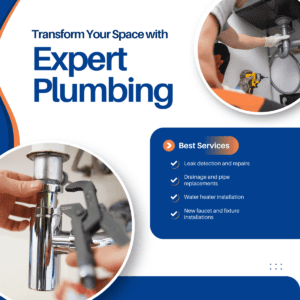When you’re planning a home renovation, one of the most important factors to consider is the plumbing. Whether you’re installing new pipes, replacing fixtures, or rerouting your plumbing system, understanding local plumbing codes and regulations is essential. These codes ensure your plumbing system is safe, efficient, and up to standard. At Frost & Kretsch Plumbing, we believe that a clear understanding of plumbing codes can help homeowners avoid costly mistakes and prevent potential plumbing disasters.
Why Plumbing Codes Matter
Plumbing codes are a set of regulations designed to ensure that plumbing installations and repairs are safe and functional. These codes cover everything from the size of pipes to the materials used and the way plumbing systems should be installed. The goal is to protect homeowners, prevent water damage, and maintain public health by ensuring the plumbing systems in homes meet certain standards.
When you’re making changes to your plumbing system, especially during renovations, following local plumbing codes is crucial. Failing to adhere to these regulations can lead to issues such as leaks, water damage, or even fines if the work is discovered to be non-compliant.
Key Plumbing Codes Homeowners Should Be Aware Of
Here are some important plumbing codes to keep in mind during a home renovation:
1. Pipe Sizing and Material Requirements
The size of pipes and the materials used must meet specific codes. For example, using the right size pipe ensures that water flows correctly and doesn’t cause unnecessary pressure on your plumbing system. The materials—whether copper, PVC, or PEX—also need to meet code standards for durability and safety. For example, certain materials may not be allowed for gas or sewage lines.
2. Drainage and Venting
Proper drainage and venting are essential for the function of your plumbing system. Vent pipes prevent pressure build-up and allow air to enter the system, which ensures waste water can flow freely. Plumbing codes usually specify the number and placement of vent pipes to prevent slow drains or clogs in your system.
3. Fixture Placement and Spacing
There are codes that dictate how far apart plumbing fixtures like sinks, toilets, and bathtubs should be placed. These rules ensure that everything fits well and functions properly, especially when you’re doing a bathroom or kitchen renovation.
4. Backflow Prevention
Backflow occurs when dirty water flows back into your clean water supply. Plumbing codes require backflow preventers to be installed in certain situations, particularly for irrigation systems, water heaters, and other devices that could cause contamination.
5. Water Heater Placement and Safety
If you’re installing or replacing a water heater during your renovation, you’ll need to follow specific codes for placement, venting, and safety. These codes ensure the water heater functions efficiently and safely.
Why Hire a Professional Plumber?
While some plumbing tasks might seem like a DIY project, it’s essential to understand that many local plumbing codes can be complex and require specific expertise. Working with a licensed plumber ensures that the job is done correctly and complies with all local regulations. At Frost & Kretsch Plumbing, our team of professionals is well-versed in the latest plumbing codes and regulations, so you can rest easy knowing your renovation is in good hands.
Contact Frost & Kretsch Plumbing
Renovating your home and making plumbing changes? It’s essential to make sure everything meets local plumbing codes to avoid issues down the line. Whether you’re adding a bathroom or upgrading your pipes, let Frost & Kretsch Plumbing handle all of your plumbing needs.
For expert advice and professional plumbing services, visit us at https://fkplumbing.com/ or call us at (586) 675 – 0097. You can also stop by our office at 47212 Jefferson Ave. New Baltimore, MI 48047. We’re here to make your home renovation project a success and ensure your plumbing is up to code!
Commercial Plumbing Services with Frost & Kretsch Plumbing: Your Trusted Partner

